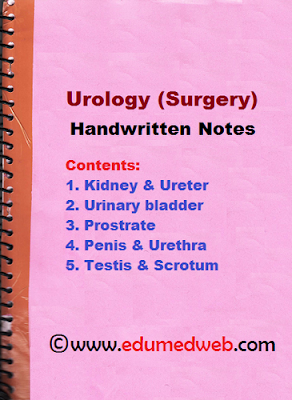Urinary Tract Infection [UTI]
Urinary Tract Infection
Most Urinary tract infections are caused by micro organism that comes in contact with urinary tract system through your urethra and then the bladder.
It happens when bacteria affects the system which carries urine out of the body- the kidneys, bladder, and the tubes that interface them.
Few Recently Asked MCQs:
1. Age below which any UTI should be admitted and treated with parenteral antibiotics is:
a. 3 months
b. 5 months
c. 6 months
d. 1 year

2. Feature/s of bowel bladder dysfuntion is/are:
a. Thickened bladder wall >2 mm
b. Post void residue >20 mL
c. Voiding <3 or >8 times a day
d. All of the above
3. When urine is collected by urethral catheterization, the colony count that is significant to be termed as UTI is:
a. > 10⁵ CFU/ml
b. > 10⁴ CFU/ml
c. > 5 x 10⁴ CFU/ml
d. Any number of pathogens
4. In an uncentrifuged sample of urine, definition of significant pyuria is:
a. >5 leukocytes per high power field
b. >10 leukocytes per high power field
c. >10 leukocytes/cu.mm
d. >5 leukocytes/cu.mm
5. A child presents with fever of 102 degree F and dysuria. Urine pyuria is present, and urine culture shows 10⁴ colonies of E.coli. What would be appropriate in this child:
a. Treat as UTI
b. 10⁴ can be considered insignificant
c. Repeat Urine routine and Culture
d. USG abdomen to rule out features of UTI
6. A 2 ½ year old girl presents with UTI. Culture is positive. What initial investigations would you suggest for her?
a. USG abdomen
b. USG + MCU
c. USG + DMSA
d. USG + MCU + DMSA
7. Acute hemorrhagic cystitis is most commonly caused by:
a. E.coli
b. Adenovirus
c. Klebsiella
d. Proteus
8. Of the following,the statement FALSE about UTI prophylaxis is:
a. Recommended for infants while awaiting imaging studies
b. Recommended for children with urinary tract obstruction
c. Recommended for recurrent febrile UTI even if there is no urinary tract abnormality
d. Continue prophylaxis in severe VUR even after 5 years if there is bowel bladder dysfunction
9. Which of the following statements regarding UTI is FALSE?
a. Repeat Urine culture if fever/toxicity > 72 hrs of antibiotics
b. All patients with recurrent UTI need USG+DMSA+MCU
c. Asymptomatic bacteriuria in a patient previously treated for UTI should be considered as recurrent UTI
d. Therapy of asymptomatic bacteriuria is not required.
10. The drug of choice for UTI Prophylaxis in a 2 month old infant is:
a. Cefixime
b. Cefadroxil
c. Cotrimoxazole
d. Cephalexin
Causes of urinary tract infections
The vast majority of UTI cases are caused by the bacterium Escherichia coli (E. coli), usually found in the digestive system. Chlamydia and Mycoplasma bacteria can infect the urethra but not the bladder.
Risk factors for developing UTIs
Factors that increase the risk of growing UTI include:
Having a bladder or kidney infection in the past 10 to 12 months
Having diabetes
Having sex frequently with new sex partner
Urinary Tract Infection Types
Urethritis – Infection of the urethra
Cystitis – Infection of the bladder
Pyelonephritis – Infection of the kidneys
Symptoms of Urinary Tract Infection
Strong and frequent urge to urinate
Bloody or dark urine with strong smell
Burning sensation while urinating
Pain in lower back or below the ribs
Pain in your bladder region
Muscle aches and abdominal pains
Nausea
Vomiting
Chills
High fever (Over 101 °F)
Fatigue
Note: Kidney Infections are dangerous if infection reaches into kidneys and also known as renal infection or pyelonephritis.
A person having Kidney infection can experience:
Chills
Fever
Groin (lower abdominal) pain
Pain in the back
How do I know if child has Urinary tract infection?
In children, following symptoms will be noticed:
Fever
Vomiting
Irritability or fussiness
Less active
Stomach pain
Back pain
Excessive crying that cannot be resolved by typical measures (e.g., feeding, holding)
Tips on preventing urinary tract infections
1.Drink 8 to 10 glasses of water a day
2.Don’t control, urinate as soon as you feel the need
3.Take showers instead of baths
4.Females should wipe from front to back after urinating
5.Avoid the use of douches or feminine hygiene sprays
6.Warm heating of the abdominal area
7.Loose fitting clothes to promote air circulation

